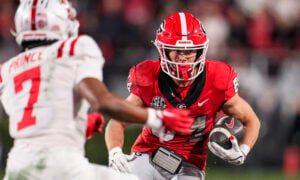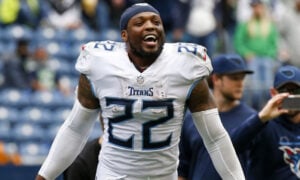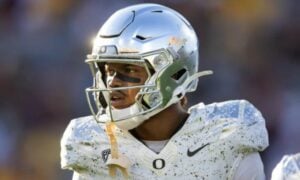Burning Questions

I live in Las Vegas, Nevada. The average temperature here in the month of November is somewhere north of 50 degrees. So far we’ve been lucky, as most days have been in the low 60s. By anybody’s definition, it certainly isn’t cold here.
It also isn’t cold in my house. We keep the thermostat set at a pleasant 73. Sometimes I throw on a sweatshirt or kick on the fireplace, but, again, it isn’t what I’d call cold.
So why, then, does the virus that has invaded my body, rendering my brain even less capable than normal (which is like calling a school bus yellower than a banana), get classified as a “cold?” I’m not cold, my house isn’t cold, it isn’t cold outside, yet I have a cold.
Has this cold made me a whiner? Probably. Has it given me an excuse to work less and watch more TV? Perhaps. Did I completely forget to write Burning Questions this week, only to be reminded when I saw last week’s edition while looking at the DLF article archive at 9:41 AM Pacific Standard Time Friday morning? I mean, I guess it is technically possible.
I don’t have all the answers to those questions, but I do know, assuming I want to keep my position here at DLF, I should probably get off my arse and do my job, even if I am basically hours away from certain death.
Is Michael Crabtree really back?
[am4show have=’g1;’ guest_error=’sub_message’ user_error=’sub_message’ ]
I have been a pretty outspoken critic of Crabs for a long time now, and for good reason. Aside from a 2012 season where he posted 15.6 PPR PPG, the Raiders’ receiver hadn’t posted more than 12.3 PPG in his career.
To say he is back would imply he was gone in the first place. As near as I can tell, 2012 was a significant aberration and not an expected result. With that being the case, I’d say he isn’t back because he was never here. Instead, we should be asking if Crabtree has finally arrived for good, or if this is another outlier, à la 2012?
When looking at his early career, we see mostly disappointment. Much of the blame has been heaped upon the 49ers’ perennially frustrating quarterback situation, and rightfully so. Still, the results were less than stellar, and at least some of this comes down to the receiver himself.
Looking past the past and into the present, what we see is a player who is as healthy and in-shape as he has been in several years. The Achilles injury, weight gain and lack of explosiveness are (mostly) a thing of the past, as Crabtree is at least a reasonable facsimile of his old self from an athletic standpoint. The real culprit for the big season comes down to two factors:
- He has a quarterback who isn’t Alex Smith, Shaun Hill, or Troy Smith.
- With Amari Cooper across the field, Crabtree is not being asked to be something he isn’t: A number one wide receiver.
As important as the first point is, I think the second is even more key. Never a burner or true WR1 type talent, the natural possession receiver, Crabtree, was always asked to do more than he was capable of doing. For a guy who hasn’t always been mentally, uh, present, that is a recipe for disappointment. Now that he is far from the focal point of a young offense studded with potential stars, Crabs can relax and do what he was always meant to do.
Before I turn this whole article into something about one guy, I’ll wrap it up with this: As long as Crabtree can continue in an offense where he can be second fiddle, I see no reason his top-20 ways can’t persist for the next several seasons.
Why do we always underrate the Danny Woodhead’s of the world?
While this is Woodhead’s best season to date, we should remember he scored a not-shabby 223 points in an RB1 2013. Obviously this level of output wasn’t predictable, but those of us who may not have underrated him per se, instead just sort of forgetting about the cute little guy, still made a pretty big mistake.
The problem with players like Woodhead and the heartbreakingly injured Dion Lewis comes down to predictability over the long term. And I’m not talking a five year window here. When you have a specialized player who relies so strongly on scheme to take advantage of their prodigious talents, you will always be at the mercy of a coach’s whim. With the average stint of an offensive coordinator in today’s NFL being approximately 12 minutes, the receiving back market is one of high volatility.
All of this is a long way of saying I prefer to treat Woodhead and others like him as I will Matt Forte or Adrian Peterson this off season. I look at them as a player I’d love to have on a contender with a right-now window, knowing their future market value is tenuous at best.
Can you name three players you’d buy low on for the stretch run?
- DeSean Jackson – The stinker in his return from a hamstring injury is just what a savvy buyer needed. Last season, with a similarly messy QB situation, Jackson topped 19 points six times and 16 points twice. All you need is for him to do that on two or three occasions the rest of this year for you to make big noise in the playoffs.
- Frank Gore – Gore isn’t a guy who will cost you much, especially if he is on the roster of a non-contender. While there is some concern the Colts are going to get blown out with Matt Hasselbeck filling in for Andrew Luck, marginalizing the run game in the process, Gore totaled 44 touches and nearly 30 fantasy points in Hasselbeck’s two starts this year. With a new offensive coordinator known for helming a successful run game, and a quarterback who they will want to help as much as possible, I see Gore as a clear mid-low end RB1 the rest of the year.
- Ben Watson – With five straight games of 9.9 points (two of which were 28+) or more, Watson’s performance is such that he isn’t just a solution at tight end, but is an incredibly affordable flex option. Drew Brees isn’t going to stop throwing it to him and the Saints have a serious lack of red zone options. I don’t see how this train stops rolling any time soon.
[/am4show]
- How to Win Without Watching Football - July 22, 2021
- 2018 Summer Sleeper: Chicago Bears - July 9, 2018
- NFL Draft Aftermath: Winners and Losers from the AFC North - June 18, 2018


































































